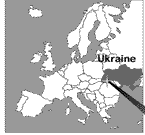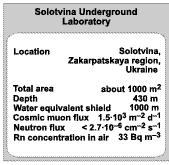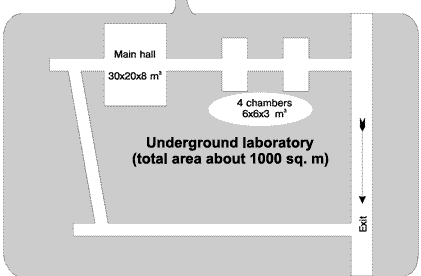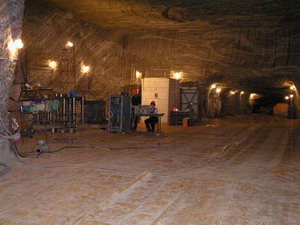








Fig. 2: The Solotvina Underground Laboratory (main hall, May 2006)

The Solotvina Underground Laboratory (SUL) was constructed in 1984 by the Lepton Physics Department (LPD) of the Institute for Nuclear Research (Ukrainian National Academy of Sciences). It is situated on the west of Ukraine, in Solotvina -- a small town in Zacarpatian region just near the border with Romania (fig. 1). The town is known by its salt mines, big Allergic Hospital with underground department and salt lakes with medicinal mud.
The principal scientific goal of the Laboratory is search for rare or forbidden processes in nuclear and particle physics, mainly for double beta (2β) decay of atomic nuclei.
The Laboratory is built in the operational salt (NaCl) mine 430 m underground (146 m below the sea level). It consist of one big and few smaller halls with full area near 1000 m2 (see schematic plan on fig. 1 and photo of the main hall on fig. 2). The natural temperature is 22-24 oC. The Laboratory is equipped with uninterruptible power supply in order to not interrupt measurements if mine power system fails.
On the depth of 430 m (≈1000 m of water equivalent) cosmic ray flux is reduced by a factor of 104 (to the value of 1.5×103 m-2 d-1). Neutron flux is <2.7×10-6 cm-2 s-1, and Radon concentration in air is <33 Bq m-3. Due to a low radioactive contamination of salt, the natural γ background in the SUL is 10-100 times lower than in other underground laboratories [1]. Such characteristics are very important in the experiments to search for rare nuclear processes.
Beside of experiments in nuclear and particle physics, a lot of applied measurements were performed in the SUL, in particular for selection of materials with minimal radioactive contamination for low-background installations.
The Lepton Physics Department made available the SUL for other scientific groups, and few experiments were performed in the Laboratory by JINR (Dubna), IAE (Moscow) and LINP (Gatchina) groups.
The Laboratory provides a good opportunities for researches in fundamental nuclear and particle physics as well as for applied low-background measurements of super-low radioactive contamination.
1. Yu. G. Zdesenko et al., Underground Physics'87: Proc. of the 2 Int. Symp., Baksan Valley, USSR, August 17-19, 1987. -- Moscow, Nauka, 1988, p. 291.
| Fig. 1: Location, scheme and plan of the Solotvina Underground Laboratory |
|||||||||
 |
 |
 |
 |
||||||
 |
|||||||||
 |
 |
||||||||
 |
 |
||||||||
|
Fig. 2: The Solotvina Underground Laboratory (main hall, May 2006) |
|||||||||

|
|||||||||